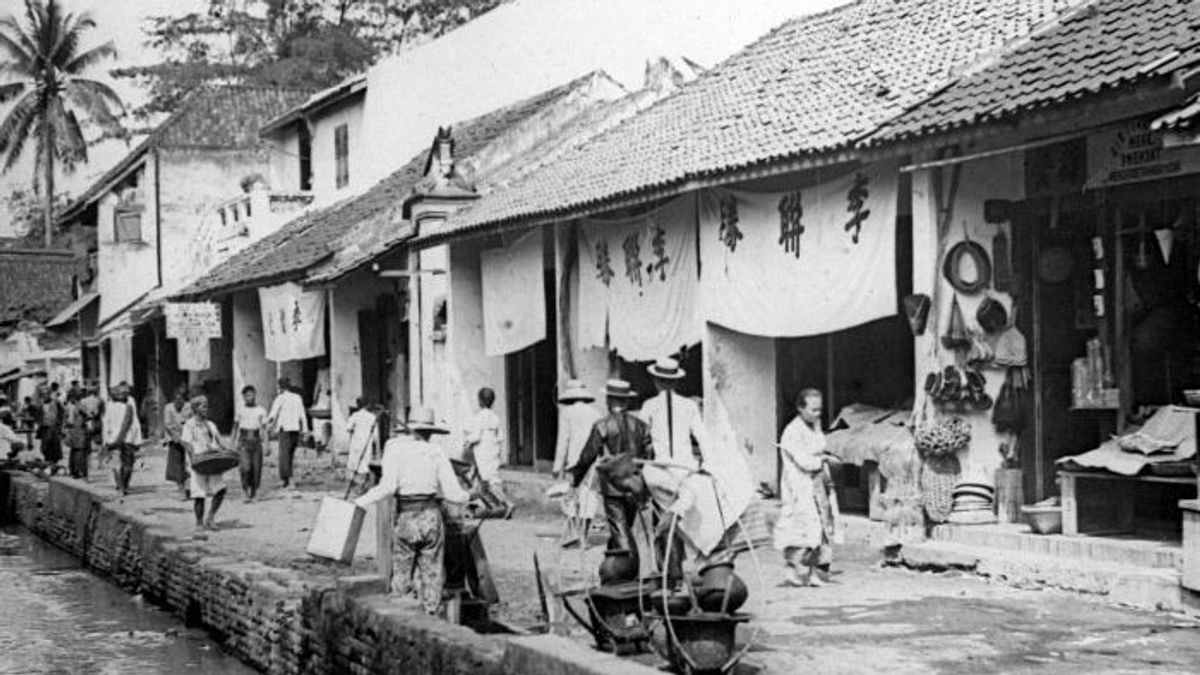JAKARTA - The extraordinary uprising, which within days turned into a massacre of ethnic Chinese in 1740 in Batavia, is one of the darkest events in the history of the Indonesian nation. The tragedy, known widely as "Geger Pacinan" or "Angke Tragedy", claimed at least ten thousand lives. For the Netherlands, there were big losses after that.
Apart from the deaths, hundreds of Chinese homes were damaged. The first hospital built for the Chinese was destroyed. The description of the bloody events of 9 October is narrated in the newspaper Selompret Melajoe in 1802. In the news entitled The Boenoe Case in Taon 1740, the events that resemble the genocide are discussed in detail.
“All the Chinese people's houses were burned, their property was confiscated, and the people were killed. From either side of them, they were chased and beaten in the big road like dogs, ”wrote the newspaper Selompret Melajoe.
"While cheering the Dutch nation, destroy their enemies, there is nothing wrong with it. How many hundred Chinese were taken captive, their heads were cut off like animals. In all Chinese homes there are many dead. A Chinese person who was currently being treated in the hospital was removed from his bed, then his neck was cut off. "
After the Geger Pacinan incident in Batavia, the Chinese who were inside the Batavia City Fortress and the Ommelanden area - the outer area of Batavia - barely appeared. Those who lived hid and fled to other areas.
In fact, in the census conducted in 1739, there were relatively many Chinese people living in the city of Batavia. On the east side there were 1,624 people, on the west side there were 2,196 people, and on the south side there were 569 people.
Even so, sorrow was not only for the Chinese in Batavia. The attitude of the colonial government, which was hasty in making a decision to carry out the massacre, made the Company incur losses. Moreover, the Company and ethnic Chinese have lived side by side and for more than a hundred years. Interdependence is built up.
Impact of Pacinan Geger for the NetherlandsQuoted from the writing of Benny G. Setiono in the book Tionghoa Dalam Pusaran Politik (2003), it is explained that the huge losses belonged to both sides, both Chinese and Dutch. For the Dutch, the absence of Chinese people made the economy in Batavia not run smoothly for the next few years.
“After this incident the surviving Chinese people did not want to do any activities. They just stay in the house. By itself economic activity fell sharply and this did not benefit the Company, "wrote Benny.
The absence of Chinese people has disrupted daily life and business. One of them is regarding the availability of food ingredients. Before Geger Pacinan, the largest food ingredient distributor to Batavia was Chinese. Hence, their absence made foodstuffs scarce. If there is, prices will soar far.
“There is almost a shortage of all goods and if there is, the price has doubled compared to before. Sometimes there are no items at all, "said Johannes Theodorus Vermeulen in the Chinese book in Batavia and Huru Hara 1740 (2010).
Dutch dependenceTo maintain the livelihood of Europeans in Batavia, the colonial government then made a number of efforts to replace the role of the Chinese. For example, on October 25, 1740, when the company decided to sell all the ships unknown to the owner.
This action was carried out in response to a request by three Batavian residents for three Chinese ships. The buyer of the ship wanted to take the ship to sail to Java with a mission to buy food for Batavia. Unfortunately, these efforts did not become the answer to the crisis that Batavia was experiencing.
Another effort made by the Company was to exempt small traders from import and export taxes on rice and other foodstuffs. The goal was that everyone in Batavia could receive an adequate ration of the available foodstuffs. In other words, the Company was involved in the distribution of foodstuffs.
Because the Company insisted on returning to normal, the policy owner then began to allow company employees who had mortgages in Chinese companies such as brick, tile and lime kilns to continue their business. Equally, everyone is then allowed to operate a sugar factory and a wine refinery.
These efforts were made again so that there was no longer dependence on the Chinese people. However, these efforts did not go smoothly and tended to fail. The failure was revealed by historian, Leonard Blusse. According to him, this happened because the relationship between the Netherlands and China was like a magnet.
On the one hand they are opposite. On the other hand they are still of attraction. Thus, when there was no cooperation between the two, the pulse of economic activity in Batavia would not beat. In the book The Strange Alliance: Chinese Settlers, Peranakan Women, and the Dutch In VOC Batavia (1988), Blusse even calls Batavia a Chinese colony city, where without the Chinese, the company might not be able to live.
All because in every pulse of the Batavian economy there was an important role for the Chinese. Blusse also added that the Chinese were the pioneers of many things in Batavia. They could play many roles, be it as coolies, middlemen, taxpayers, masons, as well as trade liaisons between China and the Dutch East Indies (Indonesia).
Slowly, although it took years after the Geger Pacinan, the Chinese and the Dutch were able to live together again. After all, they have the same interest: making a profit. It is only natural, then, that historians like Blusse would call the two of them "strange allies."
The English, Chinese, Japanese, Arabic, and French versions are automatically generated by the AI. So there may still be inaccuracies in translating, please always see Indonesian as our main language. (system supported by DigitalSiber.id)









